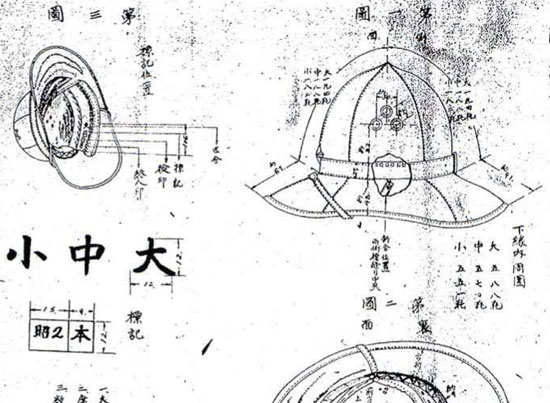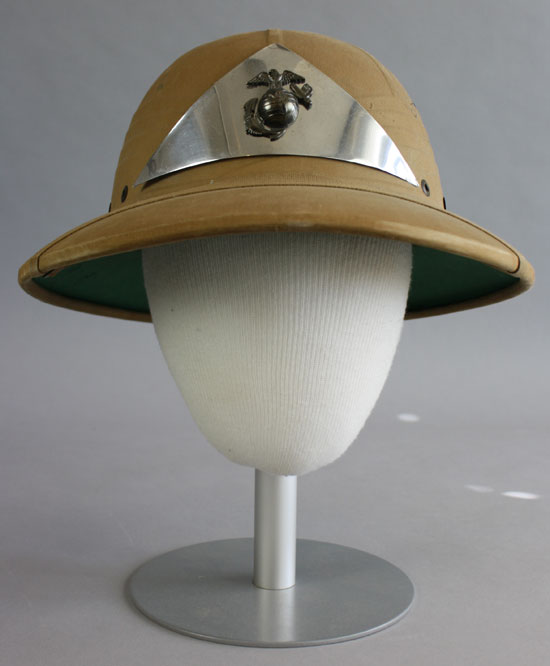 Our friends at the National Museum of the Marine Corps recently shared some photos of the above helmet. It is truly something we’ve never seen before. It was suggested that the unique triangular metal plate may have been worn to identify the owner as an “instructor” but more information isn’t available. Continue reading
Our friends at the National Museum of the Marine Corps recently shared some photos of the above helmet. It is truly something we’ve never seen before. It was suggested that the unique triangular metal plate may have been worn to identify the owner as an “instructor” but more information isn’t available. Continue reading
Mystery North Vietnamese Sun Helmet
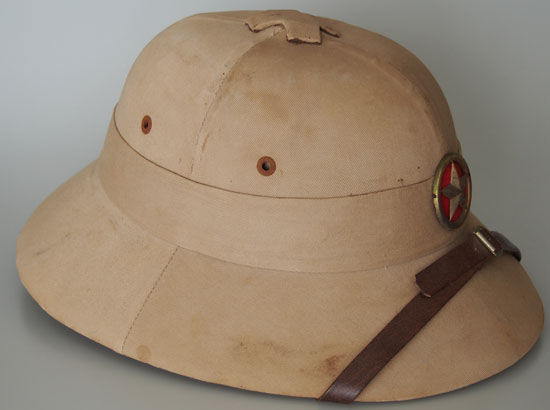
We’ve see plenty of oddball helmets. Many are fakes or bad copies, but then occasionally we come across something that seems completely wrong but yet doesn’t exactly seem like someone was trying to fake anything.
The most recent example is this apparently “homemade” North Vietnamese sun helmet. It came from a reader, whose said her father had bought it at least 20 to 25 years ago. This would have still been long after hostilities ended, and in truth before the current wave of surplus and outright fakes has flooded the collector market. It is simply put a helmet that could be many things, but what exactly is the mystery?
Imperial Chinese Army Wicker Hat/Helmet
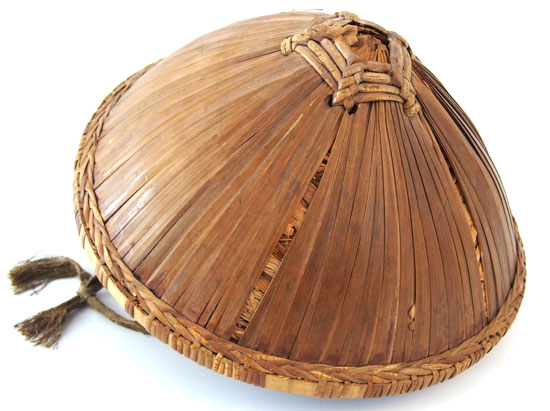
We’ve previously covered the origins and evolution of the conical hats of Asia – noting that these were used in China, Japan, Vietnam and even the Philippines. In past articles we’ve also explored how these were used by colonial military forces, including the Hong Kong Police under British rule.
One other important use of these wicker/straw hats/helmets was during the Qing Dynasty in the 19th century and even early 20th century when these were used in its Imperial Army. These were the de facto headdress for the Imperial Chinese Army Infantry until it took on a more western influenced appearance. Continue reading
The Hawley Pressed Fiber Sun Helmet – Patented
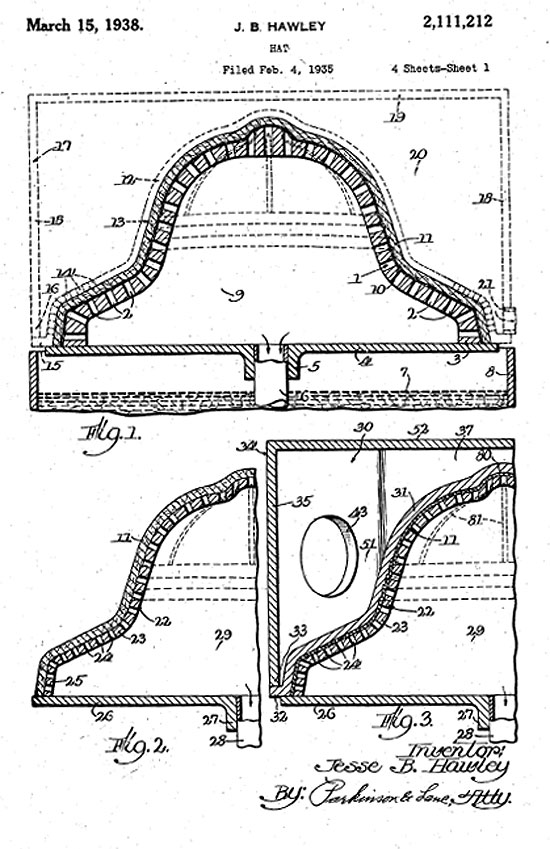
It has been long established that there were two makers of the American pressed fiber sun helmet –Hawley Products and the International Hat Company. As we’ve previously noted, the USMC blueprints for the helmets dated back to the 1940s, however we’ve been provided with the original patents from 1935 and 1936. These were filed with the U.S. Patent Office by Jesse B. Hawley, the founder of Hawley Products and apparently the original inventor and patent holder of the Hawley sun helmet. Continue reading
The Evolution of the Japanese Imperial Army Sun Helmet: Part IV -1939-41
This is a special study of Japanese tropical helmets by Nick Komiya, and is presented in four parts.
1939 March, Design Patent Granted for the Type 98 Sun Helmet Liner System
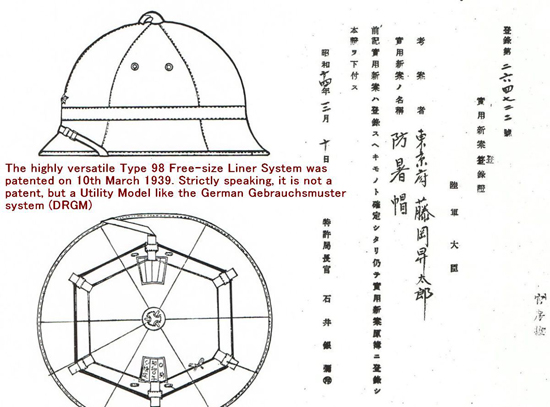
On 10th March 1939, the Patent Office Granted Utility Model Number 264722 to a Shotaro Fujioka of Tokyo for his invention of the flexible liner size adjustment system he developed for the Army’s Type 98 Sun Helmet. Fujioka was an employee of the Army’s Main Clothing Depot. The Army had applied for this on 2nd April 1937, just before sending the prototypes out for testing in Taiwan. Similar to a patent, but simpler to obtain, it is the same as the German Gebrauchsmuster system (when items are marked DRGM). Continue reading
The Evolution of the Japanese Imperial Army Sun Helmet: Part III -1930-39
This is a special study of Japanese tropical helmets by Nick Komiya, and is presented in four parts.
1930 May, Launch of the Second Model Sun Helmet Showa 5 Type (昭五式)
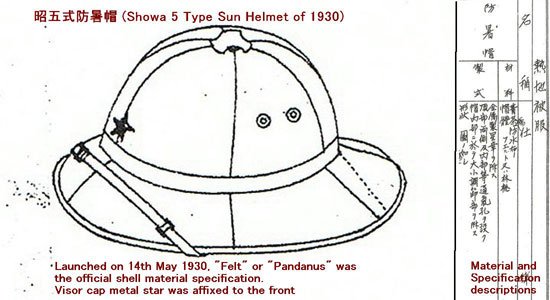
7 years after the introduction of the IJA’s first sun helmet, a revamp of design was signed off by Emperor Hirohito on 14th May 1930. A whole new range of items got launched at the same time like new canteens, back packs, bread bags and the army jacket now got a vertical seam in the back to rationalize production efficiency.
The external appearance of the sun helmet did not change hugely, but instead of having a third vent grommet on each side, a top vent with cover was revived. Continue reading
The Evolution of the Japanese Imperial Army Sun Helmet: Part II – 1921-30
This is a special study of Japanese tropical helmets by Nick Komiya, and is presented in four parts.
1921 Sun helmet Prototype testing
300 Sun Helmet Prototypes were produced for the test, of which 100 had “felt shells”, 150 had “woven Panama hat shells” and 50 had “Gourd Sponge shells (also tested in helmet covers later in 1934)”. These were benchmarked against the standard army visor cap and also against the captured German Sun Helmet. Continue reading

